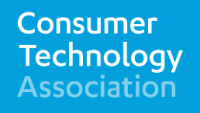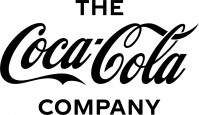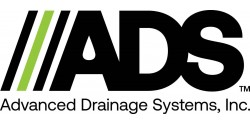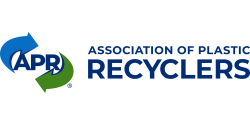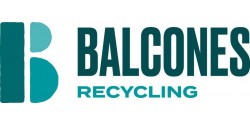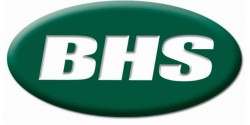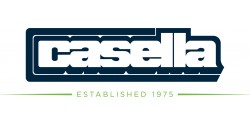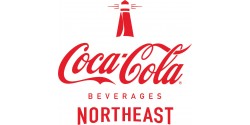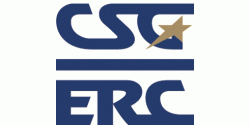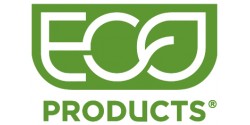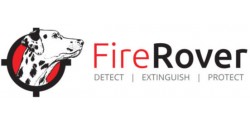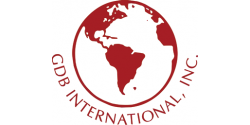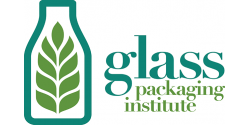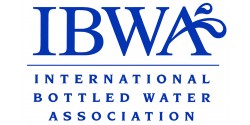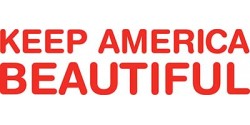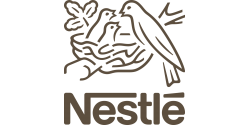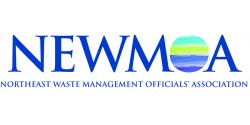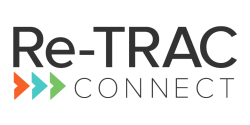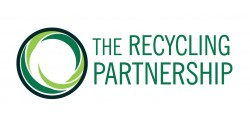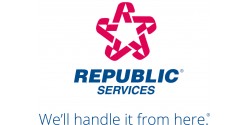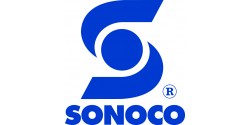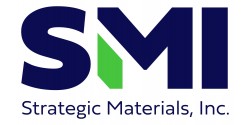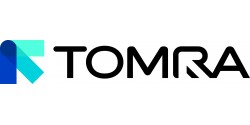April 2016
NEW & RENEWING MEMBERSHIPS
Renewing Distinguished Benefactor
New Sustaining Member
Renewing Sustaining Members
Renewing Supporting Members
- American Coatings Association
- Association of New Jersey Recyclers (ANJR)
- National Center for Electronics Recycling (NCER)
Member Spotlight - Coca-Cola Bottling of Northern New England
NERC NEWS
- Last Chance to Register - NERC’s Spring Conference – All About Recycling Markets
- 3-Year Bundled & Discounted Advisory Memberships Now Offered
- Fourth Webinar in Reuse Series Presented
- NERC's Consulting Program - Keep us in mind
- Taking a Bite out of Wasted Food in Southern Vermont
NEWLY POSTED
ELECTRONICS RECYCLING COORDINATION CLEARINGHOUSE NEW
STATE UPDATES
MASSACHUSETTS
ADVISORY MEMBER UPDATES
- Survey Finds Consumers Look To Brands & Companies When It Comes To Recycling
- Presentation on Relationship between Solid Waste Management & Product Stewardship
- Recycle-Bowl Winners Announced
-
ISRI Presents Samsung with the 2016 Design for Recycling Award®
OF GENERAL INTEREST
NEW & RENEWING MEMBERSHIPS
Membership is key to NERC's regional and national committment to sustainable materials management. We are delighted to thank for its leadership support of NERC as a Distinguished Benefactor. We are very pleased to welcome our newest Sustaining Member - TOMRA. Joining TOMRA in their support of NERC as renewing Sustaining Members are: AF&PA and ECOvanta. We are also thank the American Coatings Association, Association of New Jersey Recyclers (ANJR), and the National Center for Electronics Recycling (NCER) for renewing their Supporting Memberships in NERC.
To see a complete listing of NERC's Members and Supporters, as well as the benefits of membership, visit the NERC Advisory Membership web page.
The broad spectrum of interests represented by NERC's Advisory Members, Individual Supporters, and Board Members and their willingness to participate significantly contribute to the unique and important role that NERC plays in recycling in the region.
For more information, contact Lynn Rubinstein, Executive Director.
Member Spotlight - Coca-Cola Bottling of Northern New England
Starting out in 1977 as a single bottling operation in Laconia, New Hampshire, Coca-Cola Bottling Company of Northern New England (CCNNE) has grown into one of the nation’s largest Coca-Cola bottlers. CCNNE bottles and sells products owned by The Coca-Cola Company, Dr. Pepper Snapple Group, Monster Energy, BYB and The Moxie Beverage Company. The company operates 10 distribution centers across all six New England states and upstate New York. It also runs a state-of-the-art production center in Londonderry, New Hampshire.
Advancing Sustainability and Community
 A relatively new Advisory Member of NERC, CCNNE’s representative Ray Dube, Sustainability Manager, confirmed the company’s interest and commitment to NERC by attending the 2015 Glass Forum in Rhode Island, as well as participating in the NERC Board meeting. CCNNE is taking its commitment a step further by becoming a sponsor and exhibitor for NERC’s Spring 2015 Conference in Princeton, New Jersey.
A relatively new Advisory Member of NERC, CCNNE’s representative Ray Dube, Sustainability Manager, confirmed the company’s interest and commitment to NERC by attending the 2015 Glass Forum in Rhode Island, as well as participating in the NERC Board meeting. CCNNE is taking its commitment a step further by becoming a sponsor and exhibitor for NERC’s Spring 2015 Conference in Princeton, New Jersey.
Mr. Dube states, “Our Company believes that to be a success as a business we must also invest back into the people and planet that allow us to thrive. As a part of our efforts to foster more recycling we have partnered with organizations like NERC.”
CCNNE advances several tenets it holds as integral to its corporate culture. It strives to  reduce its environmental impact through ongoing efforts to advance recycling and decreased energy consumption in its operations.
reduce its environmental impact through ongoing efforts to advance recycling and decreased energy consumption in its operations.
“4.5 million pounds of CCNNE's recycled PET bottles were used to make fleece jackets by The North Face and Patagonia,” a recent press release stated. “The Londonderry [NH] plant boasts a 95% recycling diversion rate and in 2015 sold over 8 million pounds of recycled commodities.”
CCNNE also invests back into local communities, in connection with the communities in which it operates is a primary goal for the company. Efforts range from encouraging a volunteer spirit among their employees to donations and sponsorship of nonprofit organizations, hospitals, sports teams, and events.
In CCNNE’s Vision Statement, the company advocates for People, Planet, Portfolio, Partners, and Profit:
To achieve sustainable, long-term growth -
- People: Be a great place to work where people are inspired to be the best they can be.
- Planet: Be a responsible global citizen who makes a difference.
- Portfolio: Bring to northern New England a portfolio of quality, refreshing beverage brands that anticipate and satisfy peoples’ desires and needs and bring a moment of pleasure to their lives.
- Partners: Nurture a winning network of partners and build mutual loyalty by offering quality products and services that exceed our consumer’s and customer’s expectations.
- Profit: Maximize return to shareowners while being mindful of our overall responsibilities.
A Steady Growth
Coca-Cola Bottling Company of Northern New England credits much of their smart growth in the region to the support it receives from their owner, Kirin Holdings Company Ltd. In 1977, the Kirin Brewery Team of Mr. Sato, Mr. Okada and Mr. Asano, along with a gentleman named Roger Williams, purchased what was then Lakes Region Coca-Cola in Laconia, New Hampshire, and called this new venture KW Inc. In early 1988, KW Inc. purchased Coca-Cola of Northern New England Inc. and adopted the name it still holds today.
In 1989, a new production center in Londonderry, New Hampshire, was built. Originally 150,000 square feet, Londonderry Production Center (LPC), has undergone several expansions, and the current state-of-the-art production center is almost 500,000 square feet in size. Since 1993, the Londonderry Production Center has wont the ‘President's Awards for Quality Excellence’ 9 times!
Through further acquisitions and company expansion and investment, CCNNE now employs approximately 1,000 people around the region. It boasts a seven-state presence, with ten sales centers, and a 30,000,000-case core; being one of the largest Coca-Cola bottler in the U.S.
CCNNE offers customers more than 350 different choices of packages, sizes and flavors. Beyond its wide range of sparkling soft drinks, including, of course Coca-Cola, the company also owns and offers an old New England favorite, Moxie. Its other beverages include various seltzers, bottled water, vitamin water, juices, energy drinks, lemonade, ice tea, and more.
Beyond Sustainability
As a bottling company, CCNNE is also aware of the growing interest in the healthfulness and safety of ingredients in food and beverage products. CCNNE has adopted a number of initiatives to address these concerns, including the following:
- A commitment to not advertising to children under the age of 12.
- Adoption of the American Beverage Association’s School Beverage Guidelines:
- Voluntarily “self-policing” beverage choices offered to all U.S. primary and secondary schools.
- Only “good for you” drinks with limited or zero calories are made available to students.
- CCNNE was the first U.S. bottler to be in compliance, changing the product mix sold at over 1,000 schools in its territory.
- “Clear on Calories” packaging initiative:
- Up-front calorie labeling in bold print for each serving size.
- Coca-Cola has added up-front calorie labeling for each serving size to all of our products.
CCNNE has been in existence for more than forty years, and its current sustainability and education activities should help position it as an industry leader for years to come.
NERC NEWS
Last Chance to Register - NERC’s Spring Conference – All About Recycling Markets
Less than 2 weeks from now! Recycling markets specialists, recycling material buyers, haulers, states, and communities will all take part in presentations and conversations at the Northeast Recycling Council’s Spring Conference—Recycling Is Not Broken: Facts vs. Fiction.
The Conference offers the opportunity for communities, government, haulers, processors and manufacturers, and recycling trade associations to discuss the important issues impacting today’s recycling markets. The Conference will also focus on successful traditional and novel strategies being used in today’s recycling markets.
Conference agenda includes:
- How the issues impacting today’s recycling markets differ from those of the past
- The strength of demand in the U.S. for recyclables, despite current historically low prices for recycled materials
- The impacts of recycling markets on sustainable materials management
- The economic and environmental benefits of using recycled feedstock to make new products
- Marketing strategies being used by businesses and governments that have proved effective.
NERC’s Conference will be held at the Hyatt Regency Princeton.
NERC is a multi-state non-profit organization that is committed to environmental and economic sustainability through responsible solid waste management. Its programs emphasize source reduction, reuse, recycling, composting, environmentally preferable purchasing (EPP), and decreasing the toxicity of the solid waste stream in the 11-state region comprised of Connecticut, Delaware, Maine, Maryland, Massachusetts, New Hampshire, New Jersey New York, Pennsylvania, Rhode Island, and Vermont.
Conference Dates: April 12 – 13
Location: Hyatt Regency Princeton, Princeton, New Jersey
3-Year Bundled & Discounted Advisory Memberships Now Offered
We are pleased to announce that NERC is now offering Advisory Memberships in a “three year bundle” and save 10%! As an FYI, this is a suggestion that was made by one of our members at the Fall 2015 NERC Board meeting.
For more information, contact Lynn Rubinstein, NERC Executive Director.
Fourth Webinar in Reuse Series Presented
Reuse as a waste diversion strategy is quickly gaining momentum throughout the U.S., Canada, and Europe. Local and state governments, non-profits, schools, and entrepreneurs are all getting involved in a variety of reuse activities, and project and business models. As a result, interest in reuse has reached an all-time high.
To support this growing movement, NERC developed a series of reuse webinars to spread the word about successful projects and programs.
The fourth webinar—Stuck on Reuse!? – Resources for Making it Work—was held onMarch 24th. NERC partnered with MaryEllen Etienne of the Reuse Institute, and Damon Carson of repurposedMATERIALS in the development of the webinar. The presenters showcased a variety of reuse guides, reference materials, programs, and strategies that can be adapted to fit the needs of individual rural and urban communities.
The 5th and final webinar in NERC’s Reuse Series will be held in late Spring and will showcase NERC’s Reuse Explorer Guide. An announcement will be sent when the date is confirmed.
The recordings and PowerPoint presentations from NERC’s Reuse Webinar Series are available on NERC’s website.
The webinar series is funded by USDA’s Rural Utility Services grant program.
For more information about the Reuse Webinar Series, contact Mary Ann Remolador or Athena Lee Bradley, NERC.
NERC's Consulting Program - Keep us in mind
Need a consultant to help you with a project? Or with delivering trainings, workshops or webinars? How about research and writing projects? Technical assistance? Think of NERC! Our expert staff is available for consulting services. Read more here.
Taking a Bite out of Wasted Food in Southern Vermont
Most of us have heard the statistic—around 40 percent of the food in this country is wasted. The impacts on the environment—tons of organics dumped in landfills, increased greenhouse gas emissions—are considerable. But acknowledging wasted food as an important issue also presents opportunities, for communities to reduce wasted food and feed those who are food insecure. In a nation where food is abundantly available, waste is a reality that impacts many communities—one American out of seven struggles to get  enough to eat.
enough to eat.
Through a USDA funded project named Implementing the Food Recovery Hierarchy In Rural Vermont Communities, NERC assists communities in adopting simple steps that all of us can undertake to reduce wasted food. The project also seeks to educate communities on the benefits of food recovery.
NERC staff recently met with food rescue organizers in Southwest Vermont to discuss strategies for advancing food recovery activities in the region. A significant goal of the project is promoting donation of the foods that can most benefit food rescue organizations. In our discussions with food rescue organizers, we’ve learned that people often donate canned goods that are three or more years past their expiration dates. Whether this happens because people assume that canned goods last forever, or because they just don’t look at the dates, it presents an issue for food rescue organizations.
Food recovery providers have to follow federal guidelines for the food they distribute. 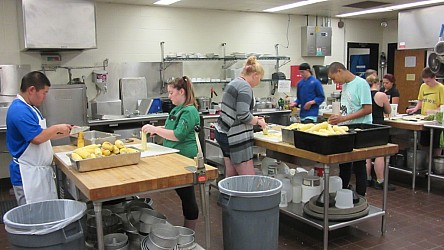 Some leeway for nonperishable items is generally acceptable; however, even canned goods with expiration dates more than one to three years old (depending on what’s in the can) cannot be used. Canned goods must also have labels intact. If the expiration date is long past, or if the cans’ labels are missing, not only are the donated canned goods unusable; the food rescue organizations then have to pay for disposal of the unusable items. NERC is working to promote “donate right” information to help insure the labels of food intended for donation are checked first.
Some leeway for nonperishable items is generally acceptable; however, even canned goods with expiration dates more than one to three years old (depending on what’s in the can) cannot be used. Canned goods must also have labels intact. If the expiration date is long past, or if the cans’ labels are missing, not only are the donated canned goods unusable; the food rescue organizations then have to pay for disposal of the unusable items. NERC is working to promote “donate right” information to help insure the labels of food intended for donation are checked first.
Another issue is the lack of perishable foods—fresh produce in particular—for local soup kitchens, food pantries, and food shelves.
Gleaning involves the collection of excess produce and fruit from farms, gardens, farmers’ markets, and other sources, and delivering then to food rescue organizations. Gleaning is a practice which is growing in agricultural areas, but urban farms and community gardens can help promote gleaning as well.
Grateful Hearts, Inc., based in Bennington County in Southwest Vermont, is dedicated to fighting hunger through methods of utilizing surplus produce such as gleaning. Several farms in the region partner with Grateful Hearts. Surplus produce is gleaned from farm fields by volunteers and is then made into “ready-made” meals that help improve the nutritional diet of community members who rely on local food pantries for their food sustenance. For example, students in the Stafford Technical Center’s Culinary Arts program processed about 250 pounds of corn and 30 pounds of zucchini, thereby providing corn chowder, grilled corn, and zucchini gratin to local food shelves. Building on its success, Grateful Hearts is helping establish other Heart Chapters around Vermont. The organization is actively promoting gleaning as an essential “farm to plate” strategy to help end hunger.
Another exciting project NERC is hoping to advance is the establishment of “neighborhood food hubs.” Residents can donate excess produce from gardens or CSAs (community supported agriculture) to the hubs. Volunteers working with a food rescue organization place a cooler on their porch for neighborhood donors to drop off excess produce. Community gardens, farm stands, farmers’ markets, community centers, and even public libraries can participate by hosting hub collection points.
In Ithaca, New York, where the neighborhood food hub concept was initiated by the Friendship Donations Network, nearly 8,300 pounds of fresh produce were donated by household volunteers in 2015. NERC is in the process of working with food rescue organizations in Southwest Vermont to strategize on implementing a successful food hub program.
Through its Implementing the Food Recovery Hierarchy in Vermont project, NERC is putting together a compendium of wasted food reduction, recovery, and composting projects. Have a program or project you want to share? Send your program information to Athena Lee Bradley.
Blog Worth Repeating - A New State for NERC
In celebration of its silver anniversary in 2012, NERC’s first blog contained a list of our organization’s many accomplishments over the years. Originally established by the Council of State Governments - Eastern Regional Conference (CSG-ERC) in 1987 NERC’s mission was to:
- Address the growing concern about the millions of tons of municipal solid waste generated and disposed annually in the Northeast.
- Garner support for the diversion of recyclable materials from disposal.
- Assist with market development for the diverted recyclables.
NERC was an affiliate member of the CSG-ERC until 2000, at which time NERC became an independent non-profit organization. For NERC’s 25 anniversary, a call for “Reflections on NERC & Recycling” was launched, which of course were made into blogs. Connie Saulter, the organization's second Executive Director, revealed this following bit of history: When she joined NERC in the fall of 1990, the organization consisted of just two people—Shelley Dresser, NERC's 1st Executive Director and herself.
The two staffers worked from Shelley's home. By 1995, NERC had established an official office in downtown Brattleboro, Vermont and had grown to four full-time staff. If you ever wonder how NERC ended up in a small town in Southern Vermont it’s pretty simple! Brattleboro was the home of its first Executive Director. And, just to note, we’re in the same office overlooking the Connecticut River in Brattleboro. One of the new staff, Michael Alexander, was hired as an intern; another, Ellen Pratt, left EPA headquarters to join NERC and move to Vermont.
According to Shelly Dresser, NERC was conceived at the Solid Waste Conference at the Penta Hotel in New York, during a conversation she was having with Bernard Melewski, Counsel, New York State Commission on Solid Waste. States Shelly, “as the MOBRO garbage barge was leaving NYC to find a home for the trash it was carrying, it was clear that a solution oriented approach to solid waste management was necessary.” She gained additional support from Maurice Hinchey, a legislator from New York and the chairman of the Council of State Governments environment committee, and NERC was born.
NERC’s original state membership was comprised of the ten Northeast states: Connecticut, Delaware, Maine, Massachusetts, New Hampshire, New Jersey, New York, Pennsylvania, Rhode Island, and Vermont. This year, Maryland joined NERC as our eleventh state member. NERC's Board of Directors represents state agency and authority recycling officials from its member states.A few years ago two Ex Officio members were added to the Board.
When NERC became an independent organization in 2000, the organization amended its bylaws to allow Advisory Members to join as non-voting members. This diversity of businesses and associations—now numbering more than 70—has served to broaden and strengthen the organization.
Over the years, with input from NERC’s Board and Advisory Members, the organization has successfully brought together a wide diversity of influences to consider and promote multiple perspectives on issues pertinent to recycling and materials management. Interestingly, NERC’s first focus was largely on market development as recycling grew around the nation. Now, with market fluctuations having a dramatic impact on the industry, NERC continues to address the issue in its upcoming conference.
NERC staff undertake projects and activities that benefit the region and, in many cases, the entire country. Its projects cover a wide range of topics—from organics and reuse, to schools and electronics scrap and have resulted in the development of hundreds of resources. NERC has developed a national presence with its participation on stakeholder dialogues, including electronics and carpet. The organization also supports several national programs – the Toxics in Packaging Clearinghouse (TPCH), the State Electronics Challenge (SEC), and the Electronics Recycling Coordination Clearinghouse (ERCC).
Along with the rest of the world, NERC has embraced social media with the NERC Blog, Facebook, and Twitter. NERC’s longstanding EPPnet and our recently added Organics Management Listserv invite participants to dialogue on two important materials management issues.
Its mission statement has also evolved along with the industry and was most recently updated in 2015:
“NERC’s mission is now to promote sustainable materials management by supporting traditional and innovative solid waste best practices, focusing on waste prevention, toxics reduction, reuse, recycling and organics recovery.”
During its nearly three decades, NERC has been at the forefront of regional strategies that support environmental and economic sustainability through source reduction, recycling, organics management, environmentally preferable purchasing, decreasing the toxicity of the solid waste stream, and recycling market development. NERC has demonstrated its leadership with its projects and has broken new ground in a number of important areas, influencing policy and affecting change through research, technical assistance, demonstration projects, and education.
And, now a new state has been added to NERC! Welcome Maryland! Kind of begs the question…What’s next!?
By Athena Lee Bradley
Sign up for NERC’s Blog and receive weekly articles covering a range of materials management topics. Have a story to tell or news worthy topic others might be interested in? Consider writing a guest article! Contact Athena Lee Bradley for more information.
NEWLY POSTED
Recycling Business Assistance Guide Updated & Expanded
The Recycling Business Assistance Guide for the Northeast is a comprehensive compendium of resources available to start-up and expanding recycling businesses in the 11 northeast states: Connecticut, Delaware, Maine, Maryland, Massachusetts, New Hampshire, New Jersey, New York, Pennsylvania, Rhode Island, and Vermont.
The Guide provides state specific contact and program information about grant and loan fund programs, tax incentive programs, sources of technical support, and other resources for assisting recycling businesses.
The topic headings are:
- Primary resources
- Grant & loan funding programs or grant, tax incentive, & loan funding programs
- Technical assistance for recycling businesses
- General business assistance
- Disaster debris management
- Waste reduction & reuse resources
Each listing includes a contact name, address, phone, email, and web address (when available).
In addition, there is a complete list of the recycling industry trade associations with hyperlinks to their websites.
For more information, or to offer a correction or addition, contact Lynn Rubinstein, NERC Executive Director.
ELECTRONICS RECYCLING COORDINATION CLEARINGHOUSE NEWS
State-Level Consumer Awareness Study - Electronics Recycling Programs
The Electronics Recycling Coordination Clearinghouse (ERCC) has released the first study comparing state-level consumer awareness levels of electronics recycling programs as well as other important consumer preferences. Previous surveys of consumer awareness on electronics recycling have focused on a nationwide rate or within a single state. ERCC undertook the surveys in order to establish an additional measure of performance for electronics recycling programs, and to compare rates of awareness of electronics recycling options among states as well as ask other important questions. After developing a survey script with 10 standard questions on awareness, collection preference, barriers to recycling and other topics, ERCC surveyed member states who stepped forward to fund their survey costs, as well as other member and non-member states made possible by affiliate member contributions. In all, ERCC surveyed 6 states WITHOUT electronics recycling laws and 6 states WITH electronics recycling laws at varying levels of confidence. To carry out the surveys, ERCC contracted with Service 800, a company with 20 years of experience in the design and execution of customer satisfaction measurement surveys.
A list of the states participating in the survey were as follows:
Law States
- Connecticut
- Hawaii
- Michigan
- New York
- Oregon
- Texas
Non-Law States
- Arizona
- Florida
- Massachusetts
- Ohio
- Tennessee
- Wyoming
The consumer awareness surveys accumulated information on the following key topic areas:
- Consumers’ knowledge of electronics recycling opportunities
- How consumers handle electronics at end of life
- Barriers to recycling used/unwanted electronics
- Consumers’ knowledge of landfill bans
To read the Consumer Awareness Survey summary report in its entirety, you can find it HERE. For more information on ERCC, please see www.ecycleclearinghouse.org.
STATE UPDATESMASSACHUSETTS
MassDEP Publishes 2014 Solid Waste Disposal Data
When the Massachusetts Department of Environmental Protection (MassDEP) published the 2010-2020 Solid Waste Master Plan for Massachusetts, MassDEP switched from expressing the state’s waste reduction goal from a waste reduction rate to a reduction in total disposal tonnage. Massachusetts primary goal is to reduce disposal by 2,000,000 tons, or 30 percent, compared with 2008 baseline data. This measure was chosen as it was the simplest and most accurate to calculate, and because it accounts for all forms of waste reduction and diversion. Given this change, combined with other priorities, MassDEP decided to no longer gather the data and conduct the analysis to calculate and publish a statewide reduction rate. Instead, these resources would be used to conduct more focused program evaluation and analysis, including assessing municipal recycling and waste reduction data, gathering specific data on food waste diversion, reviewing and analyzing waste characterization data, and assessing waste ban compliance data. At the same time, MassDEP is focused on implementing the Master Plan strategies that will achieve these disposal reductions.
The 2014 data shows total disposal of 5,560,000 tons, a 15% reduction from 2008 to 2014. While this disposal was up 3% from 2012 to 2014, the long term trend is encouraging, especially when compared to state economic data. From 2008 to 2014, the state gross domestic product (GDP) increased by 19%, while waste disposal dropped by 15%. And, while disposal went up 3% from 2012 to 2014, the state GDP increased by 6% during this same period. For more information, please visit the MassDEP website at http://www.mass.gov/eea/docs/dep/recycle/priorities/14swdata.pdf.
ADVISORY MEMBER UPDATES
Survey Finds Consumers Look To Brands & Companies When It Comes To Recycling
New research reveals that on-pack messaging continues to play an important role in driving recycling
As environmental issues grow in importance, consumers increasingly look to companies and brands to do their part. In a national survey conducted for the Carton Council of North America by Research+Data Insights, 91% of consumers say they expect food and beverage brands to actively help increase the recycling of their packages. The survey, which included nearly 2,500 U.S. adults, shows a 5% increase when compared to 2013 research that asked the same question.
Additionally, the research revealed environmental issues are becoming more top  of mind to consumers when making purchasing decisions. Seventy-seven percent report considering the effect of their purchase on the environment.
of mind to consumers when making purchasing decisions. Seventy-seven percent report considering the effect of their purchase on the environment.
Packaging continues to play a critical role in driving carton recycling perception. Sixty-seven percent of consumers report they would assume a package is not recyclable if it did not have a recycling symbol or language on it. The survey also reveals that a majority of consumers (57%) look to a product’s packaging first for recycling information, before turning to other sources. The second most popular place is the local community website (34%), followed by the product’s company website at 28%.
“The survey results reiterate what we have long believed, that we must work together – the packaging manufacturers, brands and everyone in between – to ensure we are talking to consumers in a clear way about the recyclability of our products,” said Jason Pelz, vice president of recycling projects for the Carton Council of North America and vice president, environment, Tetra Pak Americas.
“This reinforces the importance of having the recycling logo on all packaging, but especially food and beverage cartons,” said Pelz. “Since access to carton recycling has been growing tremendously in the last seven years, there are still consumers who want to do the right thing but don’t know cartons can be recycled where they live.”
Carton Council efforts include encouraging more Americans to recycle in communities that have access. Two years ago, the Carton Council convened the Carton Recycling Champions network. Comprised of 21 companies and brands that share a commitment to help prevent cartons from ending up in landfills, these companies support the Carton Council’s efforts to raise awareness of carton recycling with consumers. WhiteWave is a Carton Recycling Champion.
“This research emphasizes the important role that food and beverage companies have to play,” said Wendy Behr, senior vice president of research and development and sustainability, WhiteWave Foods. “At WhiteWave Foods, we recognize that the opportunity to promote carton recycling starts on the packaging. That’s why it’s important to us that all WhiteWave packaging has consistent messaging so consumers are educated to responsibly dispose of a product after it is consumed.”
The Carton Council was formed in 2009, with the goal to increase carton recycling in the U.S. At that time, just 18% of U.S. households could recycle the cartons they consumed through their local recycling programs. Since then, efforts have focused on building the infrastructure for aseptic and gable-top carton recycling, and now58% of U.S. households have access to carton recycling, a 220% increase.
Currently, more than 67 million U.S. households can recycle their food and beverage cartons in more than 11,500 communities.
ABOUT THE SURVEY
Findings from the research are based on a survey of 2,495 adults conducted by Research+Data Insights. The survey included a nationally representative sample of Americans who reported having access to curbside recycling programs in their communities, and the results were weighted to correct known demographic discrepancies. Responses were collected online between Dec. 2 and Dec. 13, 2015.
For more information on the research findings, visit CartonOpportunities.org/survey.
Presentation on Relationship between Solid Waste Management & Product Stewardship
“Managing Solid Waste through Product Stewardship Laws” was the February 2 eCademy webcast of the Council of State Governments. This webcast was an overview of product stewardship laws in the United States along with analysis of emerging issues and trends affecting these laws. The webinar was presented by Chaz Miller, Director Policy/Advocacy for the National Waste & Recycling Association. A copy of the slides and the talking points are available from Chaz by e-mailing him at cmiller@wasterecycling.org.
Recycle-Bowl Winners Announced
Keep America Beautiful has tallied the Recycle-Bowl winners for 2015! This year we had 1,266 schools participate representing nearly 700,000 students. Through the Recycle-Bowl four-week competition, these schools recycled 4 million pounds!
The 2015 national winners are:
- School Division: Egg Harbor City Community School (Egg Harbor, NJ)
- Community Division: Hillcrest Elementary School (Dublin, GA)
- District Division: Chapel Hill – Carrboro City Schools ( Orange County, NC)
- Waste Reduction Champion: IS 303 Herbert S. Eisenberg School (Brooklyn, NY)
- Food Scrap Collection Champion: Rancho Medanos Junior High (Pittsburgh, CA)
- Most Improved School: Priest Elementary Middle School (Detroit, MI)
The four-week Recycle-Bowl competition was conducted in the fall, culminating on America Recycles Day on Nov. 15, 2015, with participating schools striving to recycle as much as possible. Recyclables recovered during the 2015 competition totaled 4 million pounds, which prevented the release of 5,726 metric tons of carbon dioxide equivalent (MTCO2E). This reduction in greenhouse gases is equivalent to the annual emissions from 954 passenger cars.
This year’s winner, Egg Harbor City Community School, from New Jersey, didn’t have a recycling program four years ago. After starting a program in order to compete in Recycle-Bowl, they have climbed all the way to the top of the rankings! Our most improved school, Priest Elementary from Detroit, Michigan, didn’t have recycling at their school last year. A dedicated teacher collected recycling at the school and took it to her home. This year, after starting a recycling program, they collected 20 times more recyclables then they were able to collect last year!
Each of the state winners was provided with a news release template. And each of them will receive a recycled content plaque announcing they are the state winner.
Keep America Beautiful’s Recycle-Bowl prizes were made possible through donations from Trex and Busch Systems.
ISRI Presents Samsung with the 2016 Design for Recycling Award®
The Institute of Scrap Recycling Industries (ISRI) announced Samsung Electronics America as the winner of the 2016 Design for Recycling® Award for its 2016 Curved Full HD TV (UN55K6200). The DFR Award is an esteemed award presented by ISRI to the company with the most groundbreaking products designed with recycling in mind. It allows for prominent recognition for companies who are making proactive steps towards incorporating DFR principles into their products and processes.
The 2016 Curved Full HD TV incorporated easy-to-disassemble, snap-together parts that are made with minimal chemical content. The snap closures eliminate the use of 30 screws, making it easier for recyclers to disassemble. The television should take less than ten minutes to disassemble and the use of toxic adhesives, paints, and coatings was eliminated. In addition, Samsung uses polyketone, an eco-friendly material made from carbon monoxide. This is the first time anyone has built a television with a greenhouse gas emission as a building block. By doing this, Samsung is diverting a potentially harmful gas and repurposing it into a durable plastic.
Samsung will receive the award on April 7, during the 2015 ISRI Convention and Exposition in Las Vegas.
To be eligible for ISRI’s Design for Recycling® Award, a product must be designed/redesigned and manufactured to:
- Contain the maximum amount of materials that are recyclable;
- Be easily recycled through current or newly designed recycling processes and procedures;
- Be cost effective to recycle whereby the cost to recycle does not exceed the value of its recycled materials;
- Be free of hazardous materials that are not recyclable or impede the recycling process;
- Minimize the time and cost involved to recycle the product;
- Reduce the use of raw materials by including recycled materials and/or components; and
- Have a net gain in the overall recyclability of the product while reducing the overall negative impact on the environment.
ISRI began presenting the award more than 25 years ago. Previous winners include LG, Dell, Inc., Cascades Fine Papers Group, Hewlett-Packard, The Herman Miller Company, and Wind Simplicity.
OF GENERAL INTEREST
Landfills: Giving back to the Earth & Powering our Future
Provided by the NWRA
Landfills are often misunderstood, misrepresented and misjudged. Do you know that landfills make the Earth a better place and help to power the future? You probably didn’t and you’re therefore part of the majority: people who have been led to believe that landfills are a dirty word. Well, I’m happy to share with you the truth about landfills and help you to understand why landfills are actually Earth’s best friend.
Let’s start with the basics. What is a landfill? The “garbage dump” is no more. Today’s modern landfills are well-engineered facilities operating under strict federal and state regulations to ensure protection of human health and the environment.
Landfills provide useful and regenerative benefits that help to save money and energy in communities nationwide. This is how: trash, buried beneath a layer of soil in a landfill, eventually decomposes and produces gas. We safely collect these gases to convert them into valuable energy. Landfill operators apply a vacuum to collection wells located throughout a landfill to collect the landfill gas. The landfill gas is then piped to a compression and filtering unit beside the landfill. Technicians make sure that the gas is filtered properly before it is sent to its end user which could be a production plant, power grid an a number of other commercial customers who are fueled by landfill gas.
According to the U.S. Environmental Protection Agency, as of March 2015, 645 landfills in the U.S. currently have landfill methane to energy programs. These exist in all states except Hawaii and Wyoming. The EPA has identified an additional 440 landfills as good candidates for landfill methane to energy programs. This is a round-the-clock operation that powers businesses, homes, windmills and much more. In fact, landfill gas is generated 24 hours a day, seven days a week. Its generation is not dependent on environmental factors such as the amount of sunlight or wind. In fact, landfill gas supplies more renewable energy than solar power.Landfill gas recovery has an on-line reliability of more than 90%.
According to the U.S. Department of Energy’s Energy Information Administration, waste-based energy, of which landfill is part, is the source of over 5% of America’s renewable energy. Methane captured from landfills often is used as a form of green, renewable energy that can fuel vehicles or help power the electricity grid, easing our dependence on fossil fuels and foreign oil. Some waste and recycling companies even fuel their own collection trucks with repurposed landfill gas. In 2014, these landfill energy projects delivered enough energy to heat or power around 1.2 million homes and businesses.
Prominent companies have also used this renewable energy. In South Carolina, a 10-mile pipeline was built that delivers gas from a landfill to a BMW production plant where the gas is used in manufacturing.
In May 2008, the Mars Snackfood US factory in Waco, TX—which makes 85 percent of the Snickers candy bars produced in North America—started fueling its boilers with methane from the Waco Regional Landfill. The switch was projected to save hundreds of thousands of dollars in gas costs a year while also lowering greenhouse gas emissions.
NASA is using landfill gas to fuel space exploration. NASA is saving more than $3.5 million over the next decade by heating 31 buildings at its Goddard Space Flight Center in Greenbelt, Maryland, with energy from landfill gas.
Landfills have the ability to power our future in an economical and environmentally friend way. There is a lot more to learn about what makes landfills exceptional.


